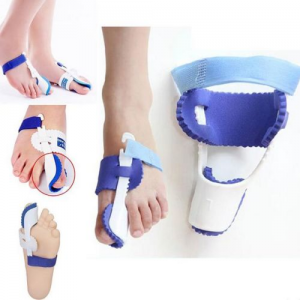What is a bunion? Did you know that you can get bunions in more than one spot on the foot?† A bunion is a deformity of the joint between both the big toe and the foot, often referred to...
What is a bunion?
Did you know that you can get bunions in more than one spot on the foot?†
A bunion is a deformity of the joint between both the big toe and the foot, often referred to as either Hallux Valgus or Hallux Abducto valgus and also the little toe and the foot, this one is called a Tailors Bunion.† These bunions can cause the affected toe to push inwards towards the middle of the foot pulling the affected joint out of line.
†
How can a bunion affect my overall foot health?
Amazingly some people can have bunions and no pain.† They might come to us and say that they donít like how their foot is looking and can we do anything to help.† Then others can come in with significant pain whether it is from the joint rubbing on the shoes or deep burning or stabbing pain within the joint itself.
Shoe shopping can be more difficult and often frustrating as many shoes can feel too narrow, causing them to be uncomfortable.
Due to the deformities within the foot it is common to get a build up of hard skin under the front of the foot and on the side of the foot along the joint.† Another not so nice place for this hard skin to grow can be between the toes due to them being squeezed together in the shoes.
As well as the bunion site itself it is common to see effects in the other toes too, often showing as curled up toes.† These too can result in hard skin either on the end of the toes or on the top where to toes rub on footwear.† This is where we also start to see effects on the nails too, getting thickened due to damage.† The damage to the big toenail can also occasionally make it feel like its becoming an ingrown nail, which if youíve had one of them before youíll agree itís not very nice.
Common causes of bunions
Bunions can develop for a variety of reasons.† Below lists some of main causes:
Firstly did you know Bunions can be hereditary? So no matter what you do they still likely to rear their ugly heads. Although not as common it is also possible for a baby to be born with bunions already formed. Certain medical conditions can leave you predisposed to deformities such as Inflammatory joint diseases like Rheumatoid disease, Psoriatic Arthritis and Gout. Disorders which can cause your ligaments to be extra flexible like generalised hypermobility and Downs Syndrome to name a couple.† Then we have neurovascular conditions, a few of these can include Multiple Sclerosis, Cerebral Palsy, Poliomyelitis and Charcot Marie Tooth. We often see people in the clinic with Osteoarthritis (OA) and bunions, but generally you find that the OA isnít the main cause of the bunion itís just a secondary factor which we need to consider. If youíre flat footed the 1st toe joint can jam when you are walking which over time can cause trauma, which in time can then cause deformity. Previous trauma to the foot, this doesnít just mean breaking a bone, it could also be soft tissue damage such as a tear in the tissue or even a sprain. Bunions can affect both men and women, however they are seem more often in women, possibly as a result of poor footwear choices.Generally the first thing people think of when treating a bunion is surgery and although this is a treatment option itís not the first treatment modality that Podiatrists will think of.† Before sending someone off for surgery, treatment options for consideration can be footwear, orthotics, exercises, and night splints to name but a few.† So donít panic, youíll be amazed what a difference can potentially be made without ever having to see a surgeon.† But at the same time donít worry, if you need a surgical opinion then we will happily refer you in that direction too.
The post Bunions what are they and do I have one? appeared first on Podiatry Point.














